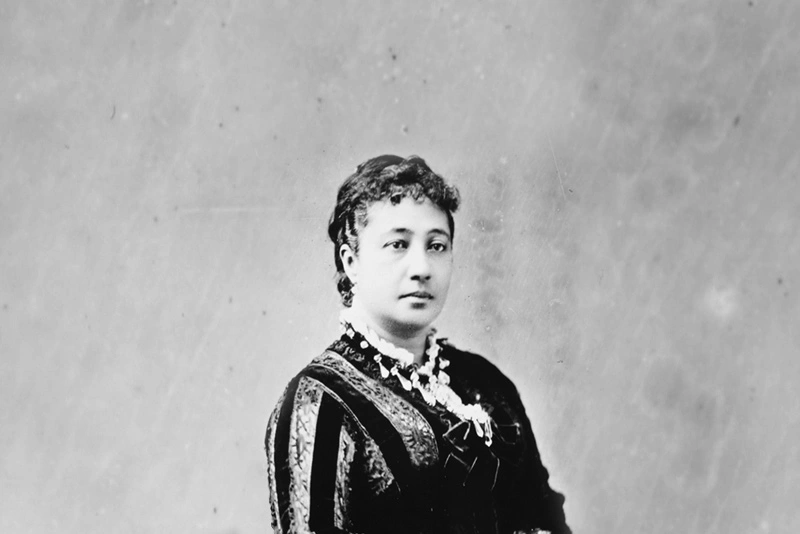In this Kūkahekahe article, Kamehameha Schools Cultural Consultant Manu Boyd KSK ‘80 celebrates lā, the sun, and the upcoming summer.
Mai ka lā hiki i Haʻehaʻe a i ka lā welo i Lehua, aloha pumehana kākou! From the rising of the sun at Haʻehaʻe in the east to the setting sun at Lehua in the west, warm greetings to all!
With the quickly approaching season of Kauwela (the summer and hot season), the sun is making ready to provide warmth, heat and energy to us all, and to the honua/earth. Let’s remember to apply ʻaila pale lā (sun screen) to protect us from this powerful, healing and profound “star” of the solar system – the sun – the celestial source of vitamin D which is vital to our planet and its inhabitants.
Lā is the Hawaiian word for both sun and day. As we learn in our ʻŌlelo Kahua classes, the article that precedes lā is “ka,” ka lā, the sun. In some other Polynesian languages, “te” is the article, and the consonant “l” is pronounced as an “r” – te rā, the sun – as in te reo Māori (Māori language).
In Hawaiʻi, akua or deities associated with the sun include Kānehoalani and Kaʻōnohiokalā. Interestingly, on the other side of the world, Ra happens to be the ancient name of the Egyptian deity of the sun.
High Chief Abner Kūhoʻoheiheipahu Kaʻehu Pākī, the father of Kamehameha Schools founder Bernice Pauahi, is described in some writings as an “Egyptologist” who was deeply fascinated with ancient world history. This description is apt, as he gave the name ʻAikupita, a Biblical reference to Egypt, to the first of two homes he built on the site near the current intersection of Bishop and King streets, where Pauahi was born.
Our founder’s first cousin, Princess Ruth Keʻelikōlani, who is better recognized as a kuaʻana or older sister, was deeply knowlegable of traditional mele or poetry. When her beloved hānai son Prince William Pitt Kalāhoʻolewa Leleiōhoku composed our Founder’s Day classic “He Inoa No Pauahi,” it is very likely that poetic sun references to our founder were established. The line “Ka wahine hele lā o Kaiona, alualu wailiʻulā o ke kaha pua ‘ōhai.” This high-level poetic reference to the benevolent goddess of Kaʻala, Oʻahu, calls out the sun-following, mirage-chasing ancestor associated with the sun.
The Hawaiian-based cultural educational curriculum at Kamehameha Schools acknowleges the ancestral understanding of the sciences as part of the ʻāina-based kuanaʻike, or worldview, of our kūpuna. Photosynthesis, the developental process of glucose and oxygen in green plants, is completely reliant on sunshine. Twentieth century Hawaiian scholar Mary Kawena Pukui brings this process to light in a simple children’s song, “Ke Ānuenue.”
Pā mai e ka lā, lā ʻeā, lā ʻeā, mōhala mai nā pua, lā ʻeā, lā ʻeā.
The sun shines, tra la la, the flowers bloom, tra la la.
Heat and warmth are described in ‘ōlelo Hawaiʻi in a number of ways. Wela is hot. Pumehana is warm, and that is just the beginning. When we use as a letter sign-off, “Aloha pumehana,” with warm regards, that is a nod to our kūpuna who held heat and warmth as not only a day-to-day experience, but a sacred reference to the kapu of sacredness of our aliʻi. “Kiʻekiʻe Kona i ka Hāpai ʻia e ka Pohu” is a fascinating mele remembered in King Kalākaua’s “Nā Mele ʻAimoku,” (Dynastic Chants) that lists an unusual number of refences to heat as hōʻailona or symbols of the high-born relatives of our founder, Pauahi.
With the 2021 Merrie Monarch Festival broadcast set for July 1-3 on KFVE, it is very likely that we will witness and enjoy sun references to the hula deity and younger sister of Pele, Hiʻiakaikapoliopele. During the hula kahiko competition that airs Friday evening in July, the traditional mele kaʻi or entrance of the dancers on to the stage is a part of the protocol in hula ʻālaʻapapa and hula ʻōlapa or standing, formal dances accompanied by the ipu (gourd) drumming and chanting. “Hoʻopuka e ka lā ma ka hikina” which heralds the “rising sun in the east” is how dancers have approached the kahua hula (stage) for centuries.
ʻAneʻane hiki mai ana ke kauwela. Summer is almost here! Enjoy this hot season with your ʻohana and hoaloaha. Take a dip in the kai. Go for a hike. But keep the traditional values of kūpuna in mind that we continue to celebrate: the rich heritage of Kamehameha and Ke Aliʻi Pauahi.
I lā maikaʻi loa iā kākou! Have a wonderful day!!
TAGS
ho 'okahua,hawaiian culture,kūkahekahe,cultural conversations,sun,hula
CATEGORIES
Kaipuolono Article, Regions, Themes, Culture, Community, Hawaii Newsroom, KS Hawaii Home, Kapalama Newsroom, Kapalama Home, Maui Newsroom, KS Maui Home, Newsroom, Campus Programs, Hawaii, Kapalama, Maui, Community Events
Print with photos
Print text only










